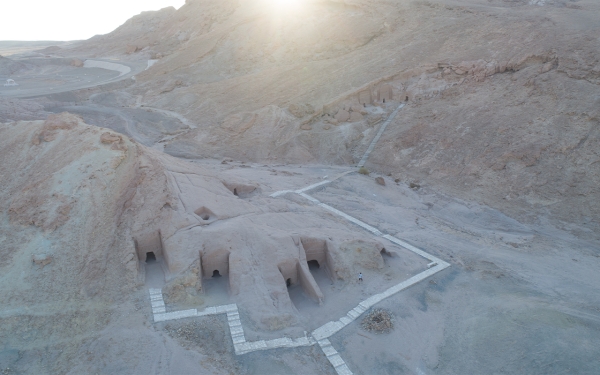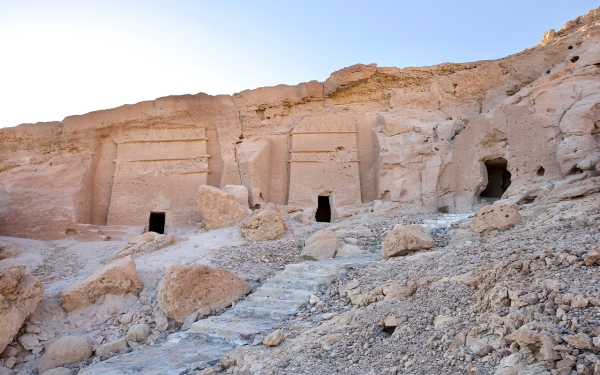


Al-Bad' is an archaeological site in Tabuk, Kingdom of Saudi Arabia. It was home to the Midianites people, who are mentioned in the Holy Quran. It was originally an oasis located in Wadi Efal and holds a historical heritage that reflects the religious, social, and economic nature of life in the region during BC and the early Islamic period.
Al-Bad' geographic location
Al-Bad' today refers to the geographic area located in the coastal part of the Tabuk Region. It overlooks both the Gulf of Aqaba and the Red Sea and is situated within al-Bad' Governorate in Tabuk Region.
Al-Bad' in Islam
Al-Bad' is known for its strategic location overlooking the Red Sea. During Islamic times, it was used as a key stop on the Egyptian Hajj Route, linking Egypt to holy sites in Makkah al-Mukarramah and al-Madinah al-Munawwarah to the west of the Arabian Peninsula. Among the most prominent archaeological scenes at the site are Mugha'ir Shu'ayb, the site of al-Malha, al-Malqata, and al-Sauaidani Well.
Nabataean monuments in al-Bad'
Mugha'ir Shu'ayb is located to the south of the site and is among the earliest evidence of habitation in al-Bad'. Its history dates back to the Nabataean era. It consists of caves carved into the rock faces, containing tombs and graves carved from sandstone.
Unlike the Nabataean's construction style, these caves are simply built in square shapes with a single entrance. A few of the caves' facades are decorated with terraces and shapes consisting of one or two rows, horizontally engraved at the top of the facade. Most of these facades are decorated with a horizontal protruding step, while the entrance to the cave is sometimes decorated with two pillars topped with two Nabataean crowns.
To the east of Mugha'ir Shu'ayb lies a residential area that was inhabited at the time of the construction of the caves. Today, it consists of archaeological hills known as al-Malha and contains Nabataean ruins, such as shards of pottery, the remains of the building foundation, and intricately designed walls built of limestone.
The site also contains a Nabataean well engraved in stone, known as al-Sauaidani Well and referred to as the Well of Moses in Islamic sources. Today, the majority of the well is destroyed and sits near the remains of ponds and other water channels.
Islamic remains at the site
Near al-Malha and to the east of Wadi Efal are historical hills that carry remains dating back to the Islamic period between the seventh and eleventh centuries AD known as al-Malqata. The remains belong to a wall built of bricks and a pond constructed of stone, as well as various kinds of pottery and clay shards dating back to the Islamic era.
Related quizzes
Related articles
